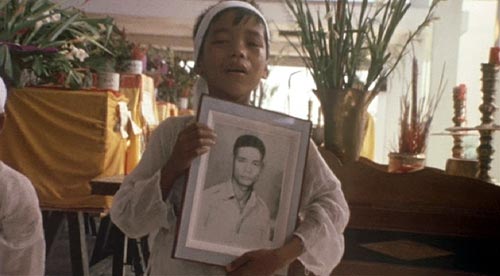
Speaking Truth to Power: The Value of Documentary
"Documentary" is an unusual noun, the etymology of which is not clear. We all know what it means: a film about the real world, or perhaps an essay. But why was a legal term (a document being a record or evidence) applied to film?
In the world of documentary, all these rules about signs and syntax take on a different coloration. When you are after representing the truth, there is - or should be - little room for symbols, or even indexes. Everything should be iconic. What you see is what you get. And the syntax should be simplistic: first, this happened; then, this happened.
But, of course, nearly all documentaries are essays, with a point of view, and the rules of syntax still apply. It is much more important here to understand how they work so that you can discount the metaphor to more fully reveal the truth.
In the early years, documentaries were obviously essays. They were narrated by authors with distinct voices and points of view. But in the early '60s, French ethnographer Jean Rouch came up with a style called cinéma vérité, or "truth cinema." At the same time in the U.S., Robert Drew, D. A. Pennebaker, and the Maysles brothers were taking a similar approach and calling it Direct Cinema. These two parallel movements were enormously influential and set the tone for documentaries for 30 years.
There was never a narrator in a cinéma vérité or Direct Cinema film. The idea was that you were looking at the unvarnished truth since there was no narrator telling you how to think about what you were looking at. But, of course, that was deceptive. The filmmaker had chosen the subject, chosen where to put the camera, chosen the angle, and - most importantly - chosen which shots appeared in the film, which did not, and in what order they were presented. In retrospect, cinéma vérité wasn't as truthful as it claimed to be. There is always a point of view, so the most honest way to deal with it is to put the persona of the narrator in the film and make it clear what his prejudices are. A few years after Rouch's cinéma vérité landmark, Chronicle of a Summer (1961), that is exactly what his compatriot Jean-Luc Godard started to do. By 1965, Godard's fiction films looked more like essays and soon his narrator's voice became a major factor in his films.
 |
||
| Peter Davis's Hearts and Minds is a strong illustration of the power of the subject in the world of documentary filmmaking. | ||
One of the great documentaries of all time is Peter Davis's Hearts and Minds (1974), a film about the Vietnam War. There is no narrator (it was filmed at the time of cinéma vérité), but the point of view is clear. On the DVD of the film, Davis provides a detailed commentary track (which should be required listening for anyone interested in learning more about the problem of truth in documentary). Davis was acutely aware that the way he edited the film could imply a point of view and he was working hard to maintain the objectivity of the film. One of the problems he faced was when he interviewed General William Westmoreland, who was the primary commander for the U.S. forces in Vietnam. Westmoreland makes a personal observation about the "enemy": "Well, the Oriental doesn't put the same high price on life as does the Westerner."
Peter Davis tells us on the commentary track that this was not a slip of the tongue. In fact, Westmoreland repeated this line three times. There was a problem with the first take. On the second take, they ran out of film. Westmoreland's words were still identical on the third and final take.
At the time, Davis was criticized for juxtaposing this Westmoreland sequence with a wrenching sequence of a Vietnamese family mourning their dead. Davis explains that he and his editors were aware of this problem. They tried putting the sequence elsewhere, but wherever they put it, it "detonated" any footage around it. This is a situation in which it appeared to critics of the film that the filmmaker had forced some significance upon his audience through the editing of the sequences. But the filmmaker is telling us that it didn't matter. The power was in the shot, not the juxtaposition.
Score one for cinéma vérité.
But watch out. This is not always the case. Be aware of the syntax of documentaries - especially when the narrator, even a voiceless one, is hiding behind the editing suite.
Semiology isn't a set of esthetic tricks, nor is it some secret ritual. It is a simple way of looking at the world. And as we have seen in this brief discussion of documentary, it applies equally to reality and to fiction (by abernathy). The next time you are watching the news on television, take a look at how that information is being communicated to you. In real life, as in fictional film and in documentary, chances are you'll notice a wealth of signs and curious meanings.
Discussion
Please post your responses to the following questions on the class message board.